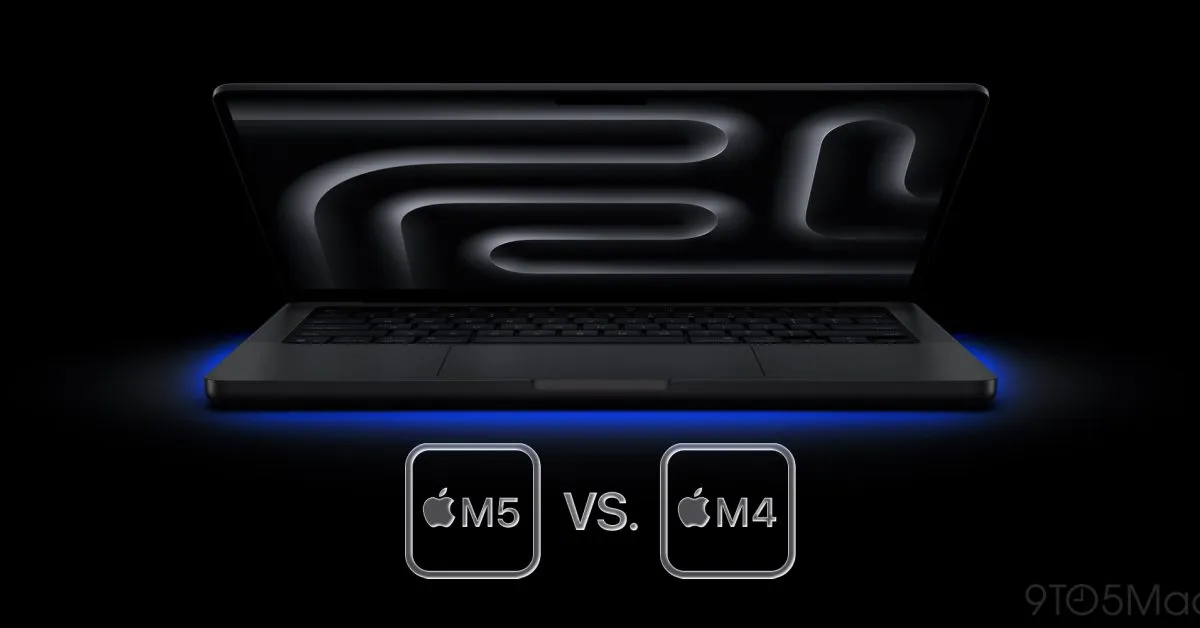
This week, Apple launched a trio of innovative products featuring the new M5 chip, including the highly anticipated M5 MacBook Pro. While Apple enthusiasts are excited about the latest offerings, many are curious about the changes made to the M5 model compared to last year’s M4 MacBook Pro. Upon close examination, the differences are subtle but notable. Here, we outline four key distinctions between the M5 and M4 MacBook Pro models.
The most significant difference when comparing the M5 and M4 MacBook Pro is undoubtedly the chip itself. The M5 MacBook Pro is equipped with a powerful 10-core CPU, a 10-core GPU, and a 16-core Neural Engine, maintaining the same structure as the M4 model. However, the CPU in the M5 has been optimized to deliver “up to 20 percent faster multithreaded performance” compared to the M4, making it ideal for multitasking and efficiently handling creative applications.
In terms of GPU performance, the improvements are even more pronounced. The M5 chip features Neural Accelerators in each GPU core, which significantly enhance performance for specific workloads, particularly those reliant on artificial intelligence. Users can expect:
Up to 3.5x the AI performance Up to 1.6x faster graphics performance in professional applications Up to 1.6x higher frame rates in gamingWhile Apple has noted improvements in the Neural Engine as well, specific performance metrics for AI tasks have not been disclosed.
Another standout feature of the M5 MacBook Pro is its increased memory bandwidth. This improvement is crucial as it optimizes an area that typically remains static across generations. The M5 model boasts a remarkable 153GB/s of unified memory bandwidth, compared to the 120GB/s offered by the M4 model—an impressive nearly 30% improvement. This higher bandwidth translates to enhanced performance in various tasks, with Apple stating that it “accelerates everything from launching applications to running large language models (LLMs) on-device.”
Beyond the advancements in the M5 chip, the new MacBook Pro also promises faster SSD performance. Apple claims that the SSD in the M5 model is “up to 2x faster” than that of the M4 model, thanks to the latest storage technology. This improvement is particularly beneficial for demanding tasks such as importing RAW image files or exporting large video projects. Alongside this speed boost, Apple has also increased the maximum storage capacity available in the M5 MacBook Pro.
If you are in the market for a 14-inch MacBook Pro and require more storage, the M5 model has you covered. It now offers a generous 4TB storage option, an upgrade from the previous 2TB limit of the M4 model. Users still have the option to choose from the existing 512GB, 1TB, and 2TB storage configurations, making the new 4TB offering an additional choice rather than a replacement. However, it’s worth noting that the cost for this upgrade is substantial, with an additional $1,200 charge for the 4TB option, which is $600 more than the 2TB model.
In conclusion, the M5 MacBook Pro represents one of the smallest updates in Apple's recent product lineup. In comparison, the M5 iPad Pro and the new Vision Pro feature a wider array of enhancements over their predecessors. This indicates that Apple is not targeting current M4 users with the new M5 model; instead, it is more aligned for those upgrading from Intel, M1, M2, or possibly M3 devices.
Are you considering purchasing the M5 MacBook Pro? If so, what device are you upgrading from? Share your thoughts with us in the comments below!
For those looking to maximize their experience with the new M5 MacBook Pro, don’t forget to explore the best MacBook Pro accessories available in the market.